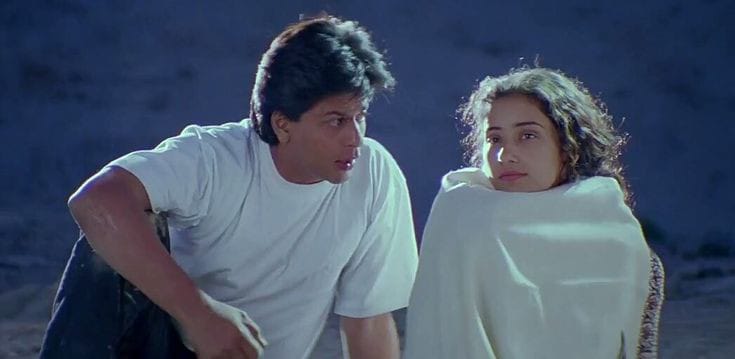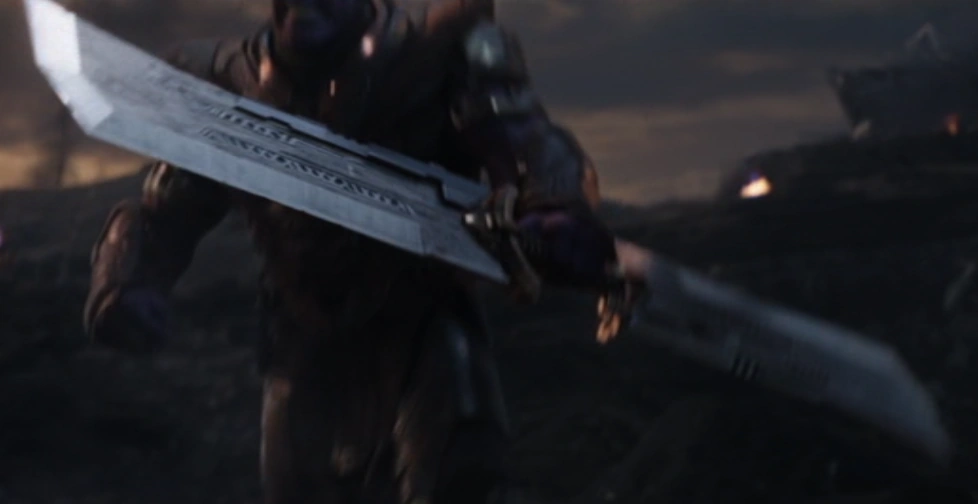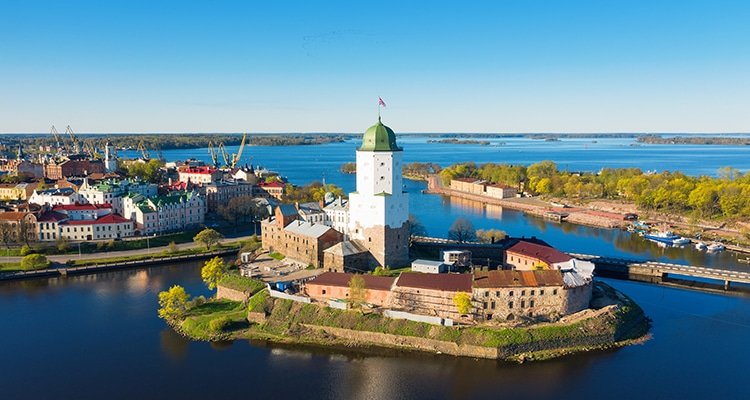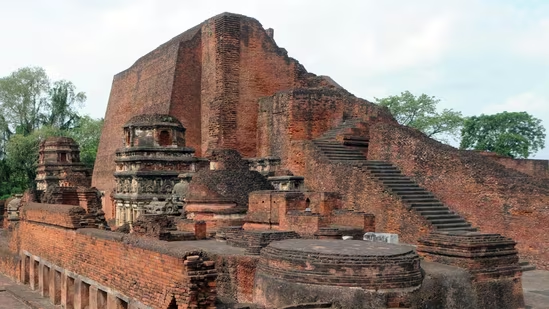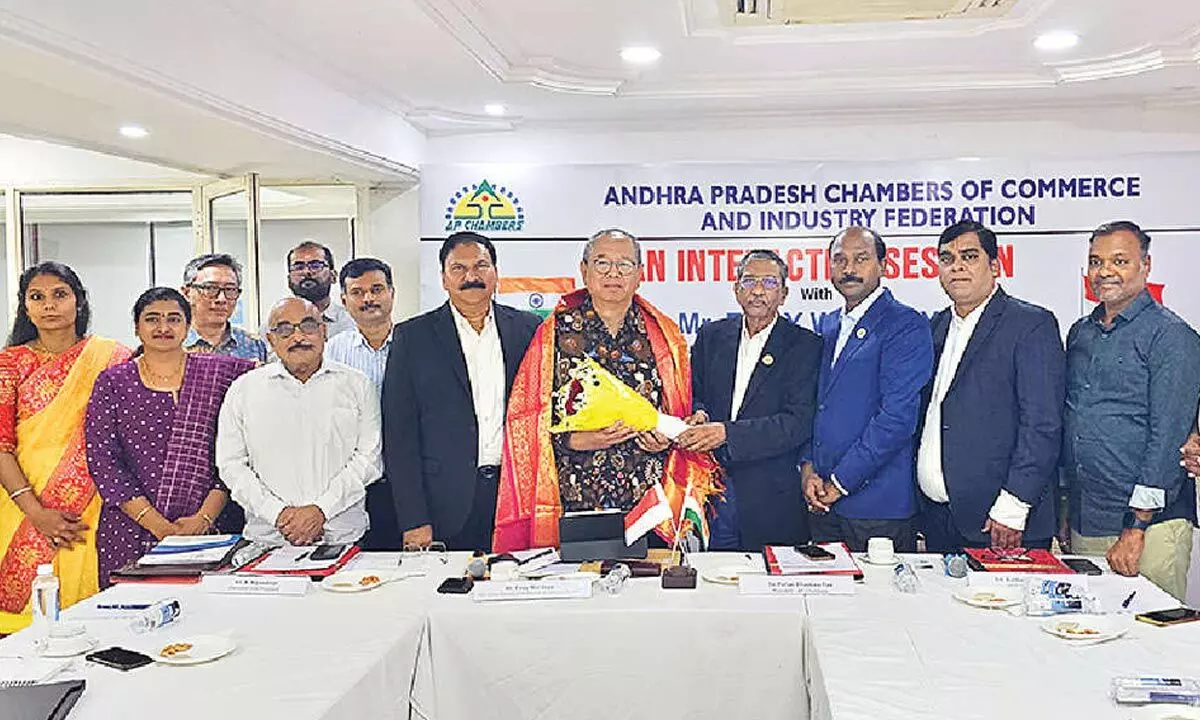Before you come at me, there’s a weighty reason behind the term ‘bittersweet’ used in the title. Everyone’s journey through Maniratnam’s classics has been a unique one, and I definitely have a lot to say about Dil Se
With a blend of subtle toxicity in the leads and rich elements of literature, Dil Se will remain one of the most iconic films of Maniratnam, Shahrukh Khan, and Manisha Koirala. The plot screams for attention towards the meticulous elements of literature etched into the film. They really help fans explore the plot further and try to stand in the writer’s/director’s shoes for once.
Here we delve into the literary elements that contributed to making Dil Se the cinematic masterpiece it is today.
(Spoiler Alert)
- Non-Linear Narrative:
The film, progressively, portrays a perfect mixture of events. Including an assortment of flashbacks and recurring patterns, like that of the train, the fragmented narratives were juxtaposed with the plot. This is a very unique literary element, generally used to spice up the cinematic experience. Suspense is built with this method, immediately engaging the audience.
We get another glimpse at the skill of narrating two stories simultaneously. The male and female leads are given equal importance and weight for the film to gravitate around.
Dil Se, for apparent reasons, nailed the art of nonlinear narratives and parallel storytelling.
- Sparks of imagery and metaphors:
We get to see one of the most romanticized elements in literature or theater arts, the rain. Quite a number of times, we see rain flooding the screens with emotions. It, metaphorically, portrays the resonant feelings.
The images of train stations are recurring too. The writers have done a wonderful job trying to portray the uncertainty of love with the help of trains.
There’s vivid imagery, including vibrant colors, a lighthouse, and a desert. There’s a constant fluctuation in the male lead’s life as he tries to process his feelings of love, anger, betrayal, frustration, and possessiveness.
- Irony, Satire and Hypocrisy:
As much as we love the generous amount of music in the film, it’s hard to turn a blind eye to the finely drawn irony. The songs Ae Ajnabi and Chaiyya Chaiyya romanticize the female lead. They describe her as that delicate damsel under whose feet lie the heavens. This is as ironic as it may seem, considering the female lead’s dangerous and criminal background.
The film’s visual aesthetics should definitely be the icing on the cake. The literary elements used in this film really help enhance the poignant message carried by the film. This, again, proves the point that written literature and visual literature go hand in hand, giving birth to one of the best cinematic masterpieces
That aside, there has been a lot of satire induced in certain scenes of the film. The socio-economic and socio-political uproar of the north-eastern regions has been satirized. There’s a clear case of misconceptions led by the media and how it feeds people with its own version of the situation.
What’s more, there is a very strong moral and ethical dilemma prevalent in the film. There’s a visible conflict between their personal beliefs, which shows the complexity of the characters (the main leads).
Regardless of constantly lying and taking advantage of each other, the duo keeps complaining about the same. This portrays a strong essence of hypocrisy. They remain oblivious to that fact until the very end of the film.
- Cultural References
The song ‘Satrangi Re’ still lingers in our heads, once in a while. There are a lot of theories that discuss the underlying message of the song. It is believed that this song basically summarizes all the stages of the film.
‘The seven stages of love’.
The song is set in Ladakh. White sand has filled in for the perfect contrast to the theme of the song.
The journey starts with basic attraction and slowly moves into infatuation. The male lead is drenched in absurd theories of love and is blinded by them.
Next comes love, followed by faith and worship. Shahrukh incredibly portrays every single emotion as they progress with the plot. To the end come madness and death. It is very evident, with the climax of the film, how the stages fit into the stages of the film.
Although this theory of ‘Seven Stages of Love’ isn’t proven anywhere, it plays the role of a cultural reference.
The film’s visual aesthetics should definitely be the icing on the cake. The literary elements used in this film really help enhance the poignant message carried by the film. This, again, proves the point that written literature and visual literature go hand in hand, giving birth to one of the best cinematic masterpieces.
With that in mind, I, Likhitha, take off on another journey, Dil Se.
**************************************************
Readers
These are extraordinary times. All of us have to rely on high-impact, trustworthy journalism. And this is especially true of the Indian Diaspora. Members of the Indian community overseas cannot be fed with inaccurate news.
Pravasi Samwad is a venture that has no shareholders. It is the result of an impassioned initiative of a handful of Indian journalists spread around the world. We have taken the small step forward with the pledge to provide news with accuracy, free from political and commercial influence. Our aim is to keep you, our readers, informed about developments at ‘home’ and across the world that affect you.
Please help us to keep our journalism independent and free.
In these difficult times, to run a news website requires finances. While every contribution, big or small, will makes a difference, we request our readers to put us in touch with advertisers worldwide. It will be a great help.
For more information: pravasisamwad00@gmail.com

